We occasionally link to goods offered by vendors to help the reader find relevant products. Some of these may be affiliate based, meaning we earn small commissions (at no additional cost to you) if items are purchased. Here is more about what we do.
Brie is one of the most popular styles of cheese to buy, serve, and eat around the holidays.
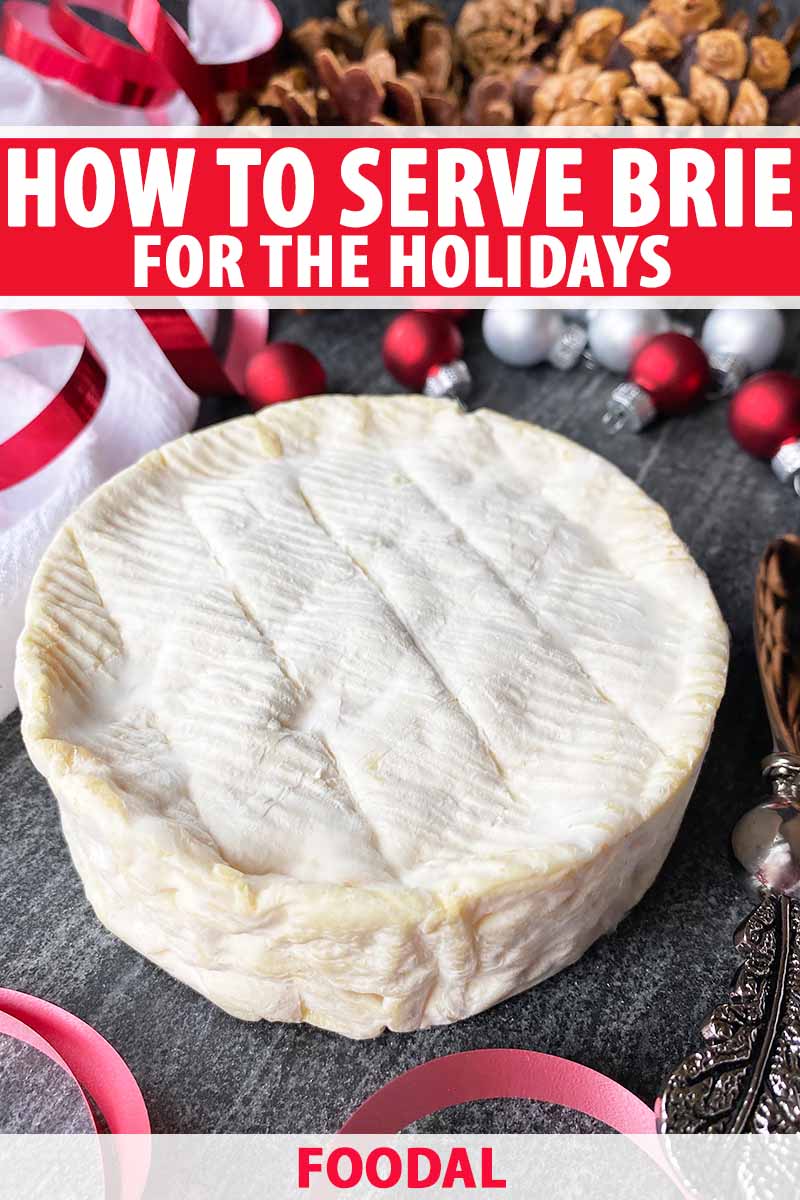
Trust me, I know. I’m certified!
As a Certified Cheese Professional (yessss, it is a real title – I’m an official curd nerd!), I have worked the cheese department for years, and have bought hundreds of bries and other soft-ripened creations for customers, including myself, to enjoy at festive gatherings and parties.
It’s a delicious, indulgent cheese selection – and no surprise that it’s so popular around the holidays!
With its soft and yielding rind, thick and creamy interior, and milky and buttery taste, brie is a classic holiday option that easily complements a range of other food and drink items.
If you’re looking to take your brie knowledge to the next level, I have the best guide for you, right here! By the end of the article, you’ll understand exactly what this amazing cheese is, plus how to buy it, store it, and prepare it.
Let’s get started – your next party is just around the holly-decked corner!
How to Buy and Prepare Brie for a Holiday Party
What Is Brie?
If I were to show you a picture of an off-white wedge of cheese with a soft and pudgy center and a thin white rind, you’d probably call it a brie, yes?
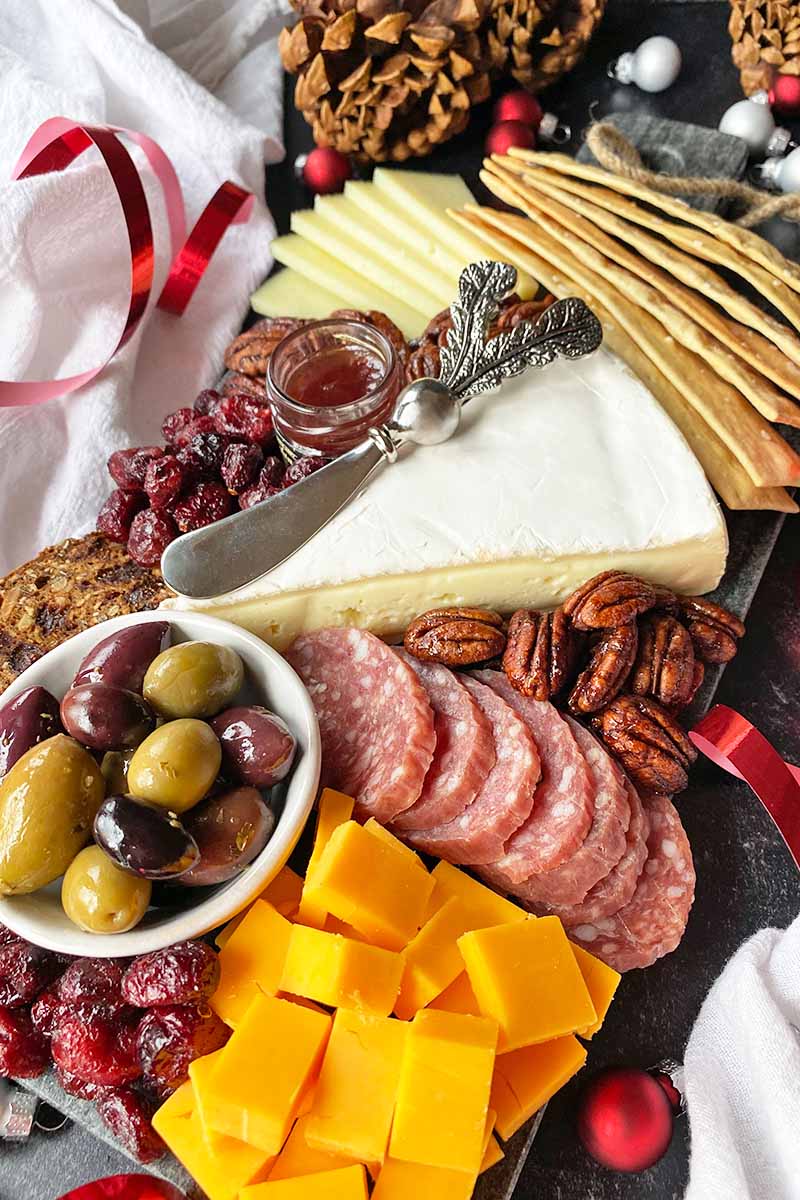
You may be right. Or wrong.
So, exactly what kind of cheese is brie?
Brie is one specific type of bloomy-rind cheese that can be made with cow, sheep, goat, or a mix of milks.
Bloomy-rind cheeses, which are also commonly referred to as soft-ripened cheeses, are characterized by their two distinct layers: the exterior layer (the rind) and the interior layer (the paste).
The rind is generally a soft, white surface that is drier and more solid than the interior, but it still yields easily when cut with a knife. Directly beneath the rind is the creamy paste.
A bloomy-rind cheese earns its unique name from how the assortment of microbes like molds, yeasts, and/or bacteria on the surface of the cheese grows or “blooms” as it continues to ripen in ideal aging conditions.
Brie in particular develops its characteristically soft, downy, white rind due to a certain species of mold, Penicillium camemberti.
In France, there are a few name-protected bries that have production, processing, and preparation requirements intended to protect and promote the integrity, terroir, and history of the cheese and its ingredients.
Brie de Melun and Brie de Meaux are two popular name-protected varieties, made from raw cow’s milk and produced in certain regions of France.
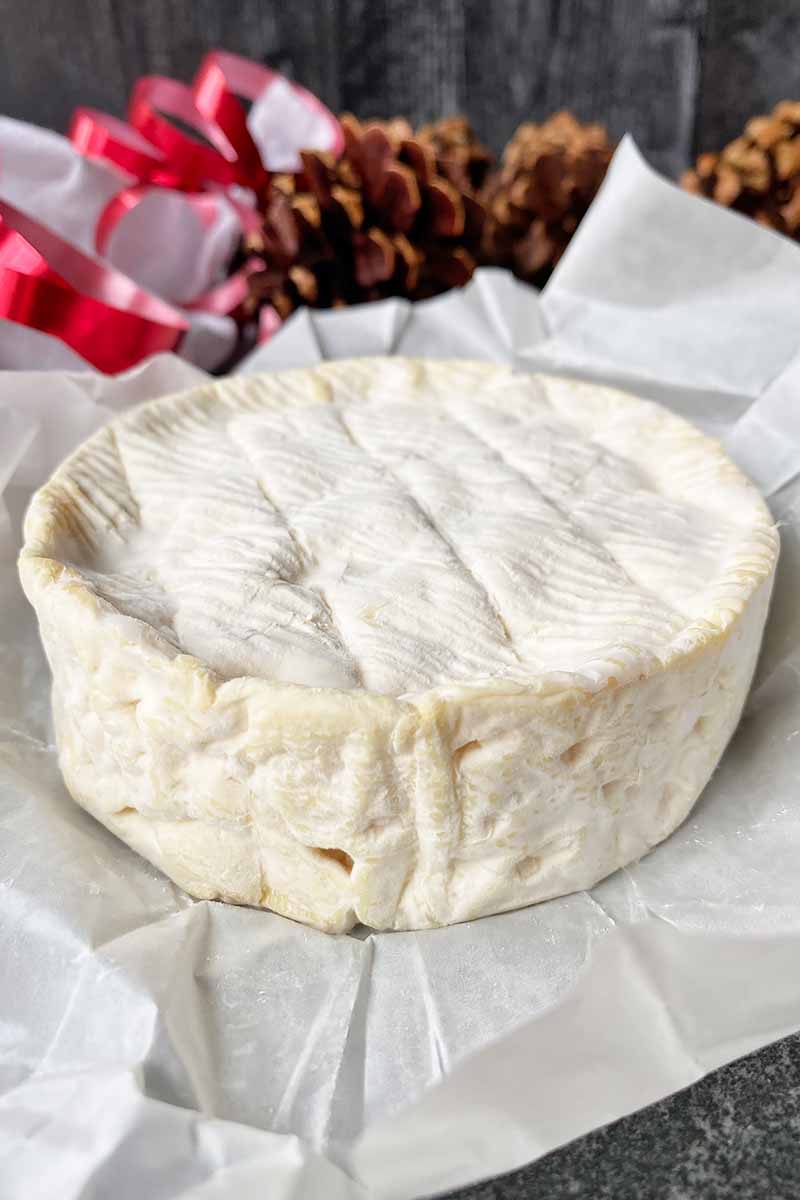
Under the United States Code of Federal Regulations, if the milk used for cheesemaking is not pasteurized, the cheese must be aged for 60 days or more. And all raw milk cheeses imported and exported to and from the United States must be aged for at least 60 days.
Unfortunately, we will never be able to taste true Brie de Melun or Brie de Meux here in the United States, since both of these options are aged for less than 60 days before being sold to retail customers.
While we may not be able to try these specific products in the United States (by the way, is anyone up for a quick trip to France?), but there are so many other pasteurized options that grocery stores, cheese shops, online retailers, distributors, creameries, and markets offer here!
Most stores sell several different formats of brie. Traditionally, these are crafted in larger wheels, and are then cut into small, triangular wedges that are sold individually. You can also find mini versions, which are ideal for use in a brie en croute recipe (more on that below), and a fun option for a composed cheese plate.
If you’re intrigued by the cheesemaking process, and want to learn more about the big, stinky world of cheese in general, Alexandra Jones wrote the perfect book: Stuff Every Cheese Lover Should Know. Buy a copy on Amazon now!

Stuff Every Cheese Lover Should Know, available on Amazon
Now that you are equipped with a basic working knowledge of what brie is, let’s grab our tote bags and head to the store!
Shopping Trip – How to Choose the Best Option
First of all, do your research. Go in with at least a general idea of what you are looking for, and how you want to prepare it.
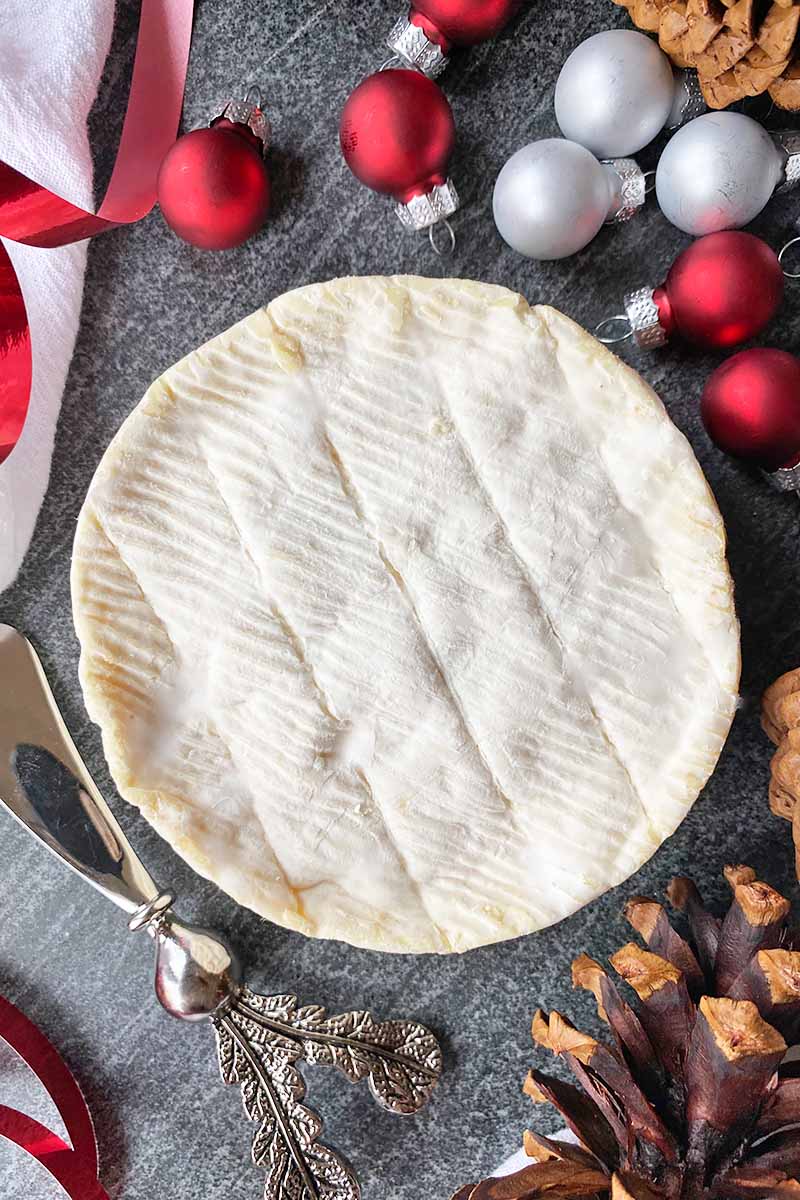
We’ll go over your options in more detail in the next section, but here are the basic questions I like to ask myself:
What is my vision? Am I looking for a small, whole wheel of cheese to use for brie en croute? Or do I want to “wow” my guests with a beautiful cheese plate, and feature a perfect triangular wedge among the other selections on the board?
For a simple and mild selection perfect for any and all applications, President’s Brie is sure to be a crowd-pleasing option. Find it on Amazon.

President Brie, 8-ounce wheel, available on Amazon
Another important piece of the puzzle is building a relationship with the cheesemongers at your local store or market.
Become besties with us! Chat with us! We love geeking out over any cheese concerns and questions you may have! And we hold the keys to unlocking all of the delish details of each cheese sold.
I highly recommend asking any basic cheese questions that are on your mind well before the rush of the holiday season. That way, we can take all the time we need to discuss the products we sell, as well as any new seasonal products that may be coming in, and to get to know you and your guests’ cheese preferences.
Ideally, you can ask for a taste of the cheese before you buy, but that may not be an option for many stores, depending on their individual policies. And since the breakout of Covid-19, many grocery stores have discontinued the practice of tasting and sampling.
Again, cheesemongers are your gatekeepers to the flavor profile of each cheese – if you can’t taste the cheese yourself, let them paint a picture for you of the taste, aroma, texture, origins, and recommended pairings.
For a great option to buy from a United States producer, consider this cow’s milk brie from Plymouth Cheese, based in Vermont. The brie is available for purchase online at Mouth.com.
Plymouth Cheese Ballyhoo Brie, 8 ounces, available from Mouth
If a cheesemonger is not available, here is a quick list of common no-no’s to look (and feel, and smell!) for when you’re shopping. Don’t buy if:
- It feels abnormally hard and won’t yield under pressure when gently squeezed. The brie is either underripe, or has suffered significant moisture loss.
- It has a strong, ammoniated odor. Some stink or mushroomy undertones are perfectly fine (and highly encouraged!), but it shouldn’t smell like chemicals. This means it is well past its preferred stage of ripeness.
- It has a rind that looks or feels slimy, or that is heavily discolored. While some cheeses have a rind that can naturally develop harmless molds in a variety of colors, the rind should remain mostly white.
If you frequent your store often, it may be in your best interest to try a new style of brie each week, especially if there is a wide selection available.
Uh-Oh… The Store Is Completely Sold Out!
Isn’t it fun to think of the worst-case scenario?

It’s actually a smart strategy to have a Plan B (and C) if your original plan falls through, especially when customers are clearing out the shelves during the last few days leading up to a holiday.
It’s always a big bummer when I see the words “out of stock” written in bold, red, all-caps text on many ordering invoices.
But it happens. A lot.
Due to high demand, distributors often place a cap on how many cases stores can order. Distributors may also require buyers to place a “pre-order” for these items, meaning you must buy your supply months in advance of shipment. And once that supply runs dry, it’s out for good until the next pre-order.
This is a system used for many items that see a boom in popularity during the holidays, from pumpkin pie to whole turkeys.
And brie’s popularity is so thick you could cut it with a cheese knife. It is the homecoming and the prom queen, all wrapped up in one cute little package!
So you might be doing some last minute holiday shopping, have to wait an extra 20 minutes circling the parking lot because there are NO empty parking spaces, fight off a sweet old lady for the last shopping cart, go the cheese section with high expectations of finding everything on your long list for a cheese plate…
… and are immediately slapped in the face with disappointing rejection to discover that ALL the brie is GONE.
GONE!?
Do. Not. Worry.
Breathe in, breathe out – and let’s find you a replacement!
Making a substitution here is easy. Just stick within the realm of other soft-ripened or bloomy-rind cheeses!
Camembert is a nice substitution, though it tends to have a stronger taste and smell, and may be softer and more delicate.
Cheeses that have descriptors like “double creme” and “triple creme,” referring to the percentage of fat in dry matter of the cheese, are also perfect subs when your usual MVP is out for the count.
Take a look at this melt-in-your-mouth option called Saint Andre, available on Amazon. While traditionally sold in wedges, you can also buy it in mini wheels. It’s adorable as a gift or on a board!
Saint Andre, 7 ounces, available on Amazon
Here is a list of some of my favorite replacements:
- Brillat Savarin
- Camembert
- Delice de Bourgogne
- Fromage D’Affinois
- La Tur
- Saint Andre
- Saint Angel
- Pierre Robert
- Robiola due Latti
Whether you were able to grab the very last brie, or if you needed to buy a replacement, these all need to be stored the same way. Read on for my storage tips!
Storing at Home
Brie needs to be stored tightly covered in the refrigerator. The wrapping in which the cheese is sold is an acceptable covering for temporary storage in your home refrigerator.
Store it in the cheese drawer of your fridge so it stays protected and out of the way of your other refrigerated products.
I also like to place my brie in an airtight container, as another protective storage strategy. It also helps to minimize the strong aromas from the cheese!
Not everyone has grown immune to the smell of stinky cheese like I have…
I recommend using your brie within a week of purchase. Due to its high moisture content and light aging, brie is particularly delicate, and cannot be stored long-term in your refrigerator without quickly declining in quality.
And please don’t freeze brie! The freezing process may permanently – and negatively – alter the texture.
Brie, and any other soft-ripened cheese, is meant to be enjoyed at peak ripeness without compromising its beautifully delicious integrity.
As the saying goes, enjoy it while it lasts!
See our ultimate guide to storing cheese for more tips.
How to Serve It
It’s (finally) time to party! Here is a list of my favorite ways to serve brie, with some additional pairing tips.
Back to Basics: Serve As Is!
A wedge of brie enjoyed on its own, plain and unaltered, is absolutely perfect to serve at any party. Requiring the least amount of prep, it’s a great option when you are too busy to dedicate a lot of time to kitchen work.
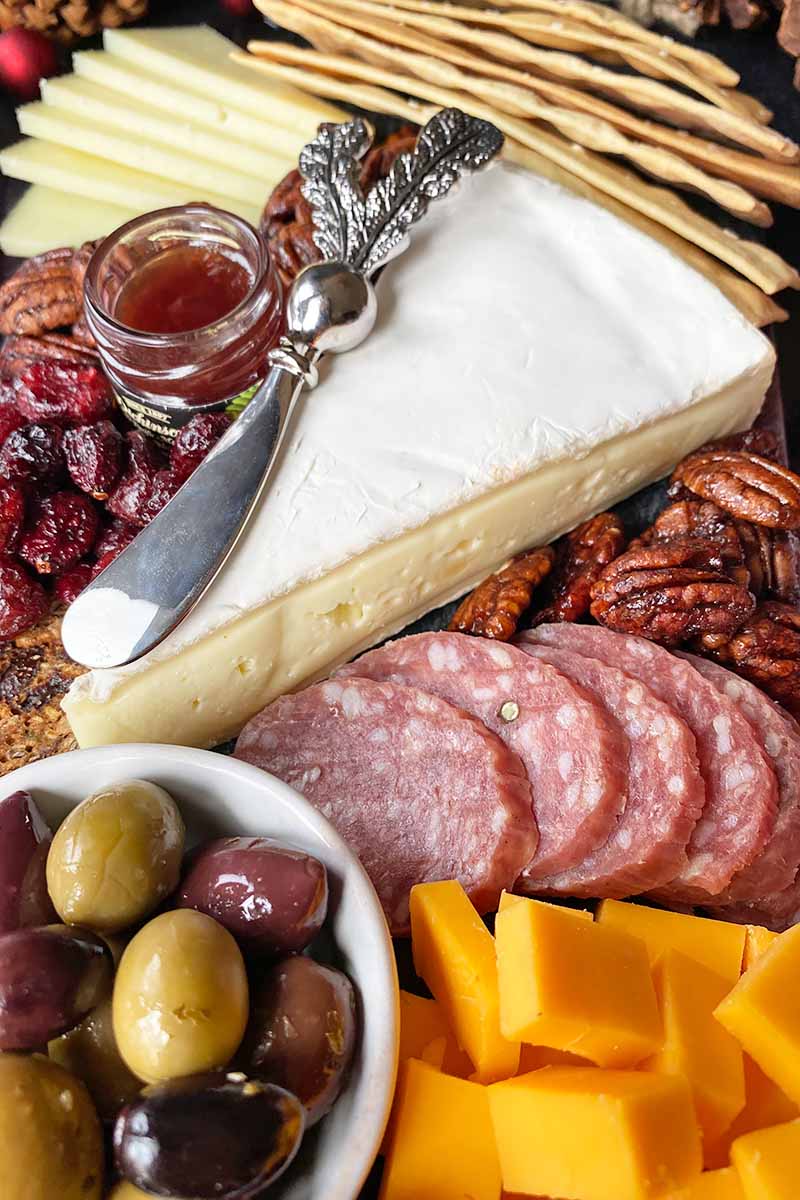
Simply serve the entire wedge or wheel on the board – and don’t forget to serve with a knife spreader!
If you decide you want to cut the brie into wedges, it’s difficult to cut this type of cheese with a chef’s knife or paring knife without it sticking all over the blade. The best option is a cheese knife specifically designed for use on stickier, softer cheeses.
Look for knives with an intentional blade design that includes holes or a structured surface area, like this cheese knife from Boska Holland that’s available from Amazon. The holes or textured surface prevent the cheese from sticking to the blade while you are cutting.

Boska Soft Cheese Knife, available on Amazon
I like to give any cheese that I serve about 10 to 15 minutes to sit at room temperature for maximum olfactory enjoyment. Once the chill from the refrigerator dissipates, you can experience the best aroma and taste of the cheese.
Oh, and it’s very important to tell you this…
You can eat the rind.
Let me repeat: You CAN eat the rind!
The rind on a wedge or wheel of brie is completely edible. Give it a try! Because bloomy-rind cheeses ripen from the outside in, the rind is going to have the most concentrated, strong flavors – eat a little with the paste for balance.
If you see any signs of small mold growth on the rind, like a spot or two of blue or black mold, simply cut that portion off with a knife before serving.
Bold and Baked
If you prefer to go one step beyond simply plopping a wedge on a board, you can choose to briefly bake it.
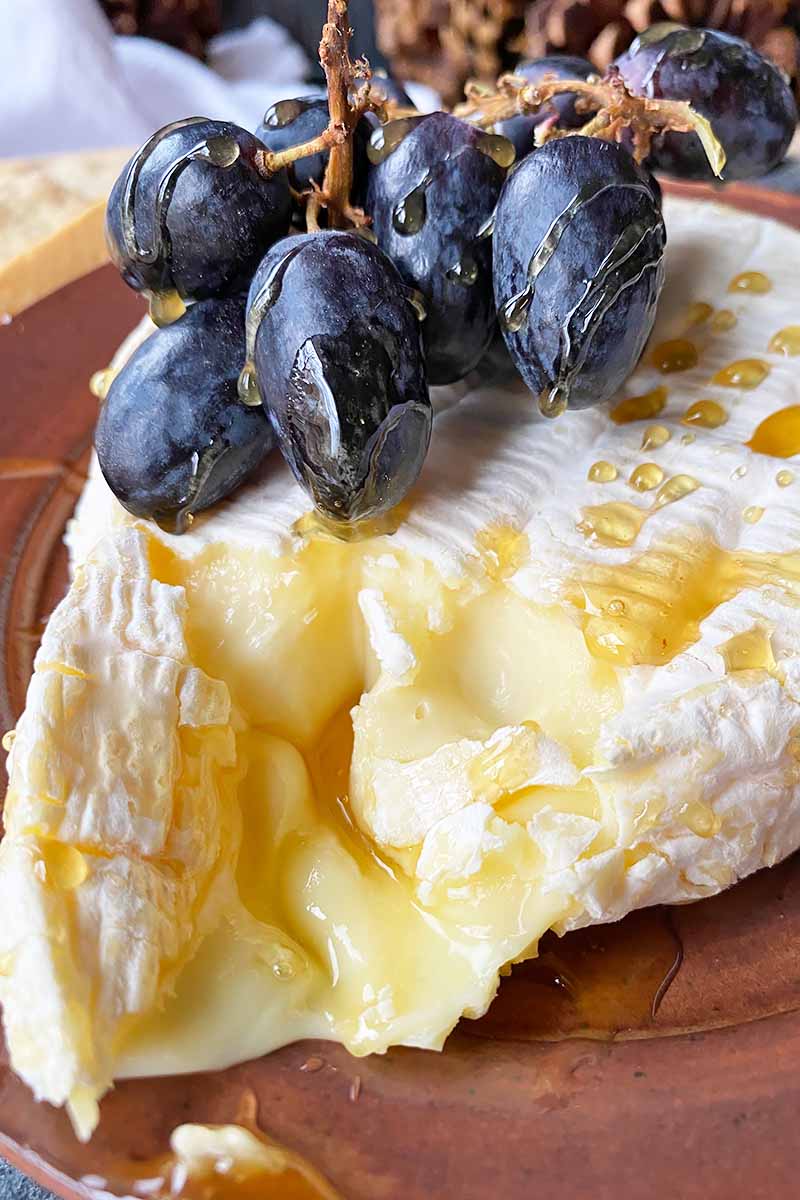
It’s a comforting, warming option that also makes it easier to spread on bread or crackers.
This method works with either a whole wheel or a wedge – the wedge will delightfully ooze out as it bakes!
Simply place room temperature brie on a baking sheet that you’ve lined with parchment paper, aluminum foil, or a silicone mat. Bake for 8 to 10 minutes at 350°F, until the cheese looks soft, but not completely melted. Remove from the oven, and let it cool for 5 minutes before carefully transferring to a serving platter with a spatula.
Brie en Croute
If you really want to pull out all the stops this holiday season, present your guests with a beautiful brie en croute!
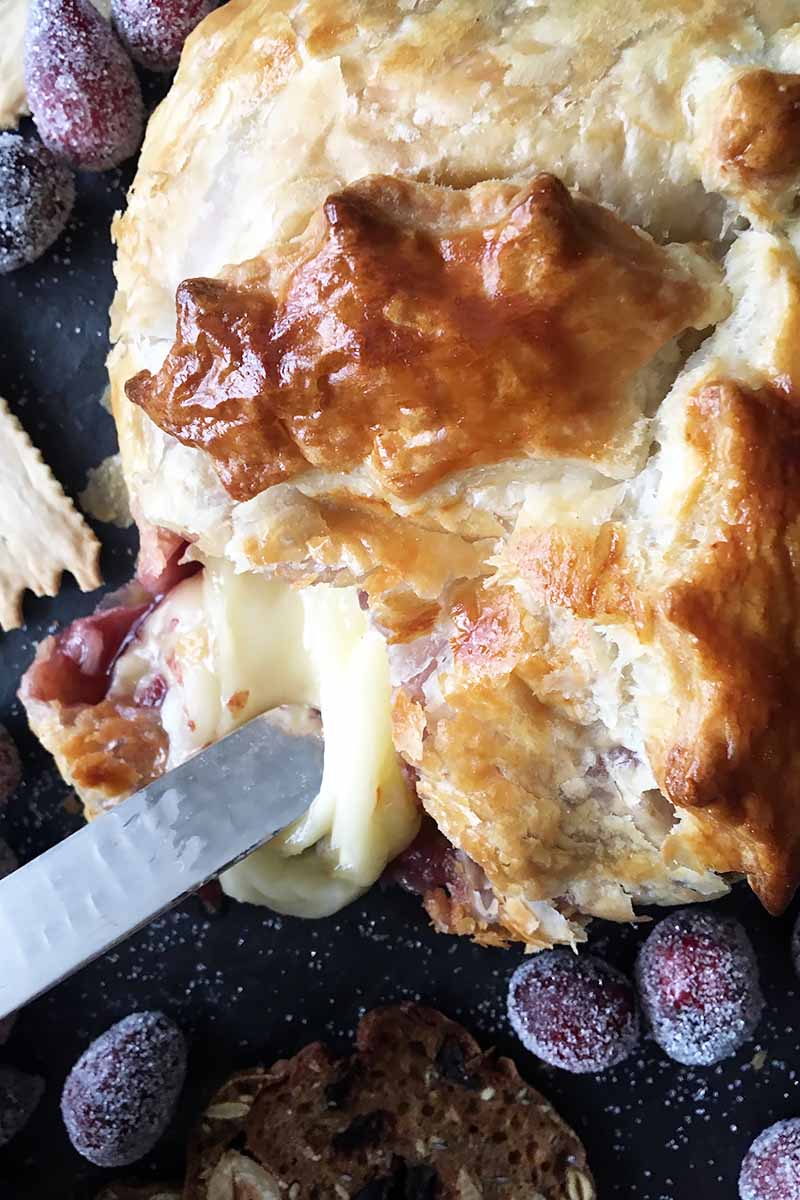
We have the perfect recipe for brie en croute, with plenty of tips, tricks, and jam recommendations to try.
Be sure to choose a small, whole wheel of brie or another small, soft-ripened option. Buy one that isn’t too soft or ripe, or it may melt prematurely while the pastry is still baking.
Perfect Pairings
Lucky, lucky you – brie is SO easy to pair with food and drinks!
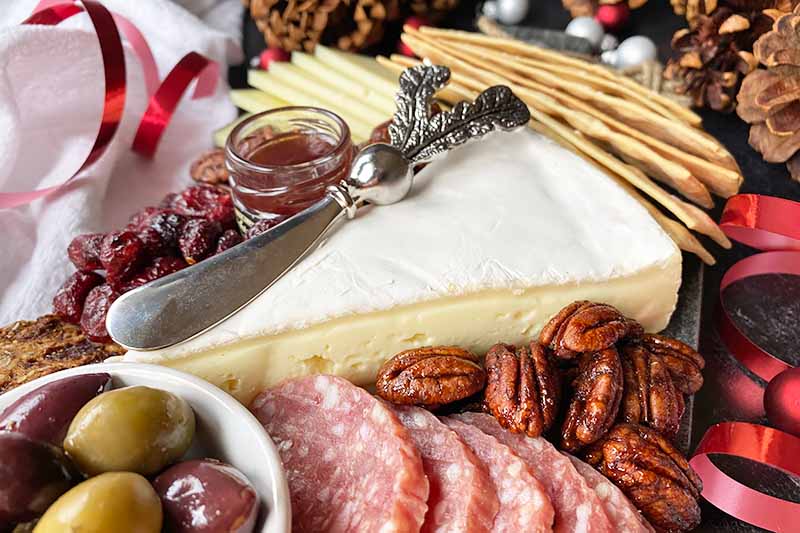
It’s actually extremely difficult to mess up the pairings. Whether served as is, baked, or prepared en croute, buttery brie is a foolproof cheese that’s fantastic to serve with so many different things.
Keep in mind that your chosen accompaniments should work together in some sense. It’s a good strategy to treat your cheese plate as a cohesive unit, with individual parts that intentionally either echo or contrast with each other.
Would you rather go all sweet, all savory, or maybe a little mix of both? Maybe you want to do a play on a lox spread and use brie instead of cream cheese? Perhaps you want to serve your brie for dessert rather than as an appetizer?
Figure out when during the event you want to serve the brie, and that will help with your overall vision for the flavor pairings.
In the end, don’t let the prospect of building an elaborate cheese board overwhelm you. You cannot go wrong with serving just a few core items like a jam and some crackers!
Try Stonewall Kitchen’s foolproof 2021 Cheese Pairing Collection, as a fantastic starting point for your own pairings, or as a great gift idea for your favorite host or hostess.
Cheese Pairing Collection, available from Stonewall Kitchen
If you want even more suggestions , continue reading for my pairing advice.
Spreads
Brie pairs well with pretty much ANY jam, jelly, honey, cranberry or mango chutney, or tapenade. The high fat, creamy taste, and texture of the cheese contrasts brilliantly with the concentrated acidity and/or sweetness of most spreads.
Choose a spread that you like to eat, and you’re guaranteed to have a delicious pairing.
Chutney Collection, available from Stonewall Kitchen
I like to have a couple different varieties of spreads on hand to please most palates at the party, like this collection of chutneys from Stonewall Kitchen. It offers a fun variety of options for serving!
You may also want to try your hand at making some homemade jams, jellies, and spreads! Go, you overachiever, you! You’ll love these Foodal favorites:
Once you choose the spreads you want, just remember to include a spoon or spreader to serve along with them.
Bread and Crackers
Brie is just begging for a dipping and spreading vessel! This is another opportunity to play with a variety of your favorite crackers and breads.
Crackers are easy – you have shelves upon shelves of great options to choose from at the store. I tend to do one plain and one flavored variety.
Have fun with the flavored crackers! These rosemary olive crackers from Stonewall Kitchen would work perfectly with appropriate accoutrements like olives and salami.
The same goes for bread! I like a plain sourdough loaf, a baguette, or any other other rustic style of crusty bread, but chat with the experts at your local bakery to see if they have any seasonal flavored options to try.
Just be sure to slice them or rip them to a size that’s easy to dip, spread, and eat. You can choose to toast the slices, or not – both options work!
And if you have some time while you’re on your holiday break, I suggest making some bread and crackers from scratch. Here are some of our favorite tried and true recipes:
I love the crunch factor of a cracker or piece of toasted bread. These create one of the best textural contrasts with creamier cheeses. But if you want to ditch the carbs, fill the platter with fresh fruits and charcuterie instead!
Fruit
Dried, fresh, whole, sliced – all fruit options are welcome companions for brie.
With their lovely sweetness, I find that berries, pommes, and stone fruits are the best options with the most versatility when served with a selection of the other accoutrements mentioned here.
I like to have both dried fruit and fresh fruit available on most of my cheese plates, for more mixing and matching freedom.
If you would rather stay in the territory of winter seasonal fruits, reach for the pomegranates, cranberries, and pears.
Cranberries are a little too tart on their own to be served raw with brie, but we have an amazing roasted cranberry recipe for you to try that would be divine!
Charcuterie
Adding charcuterie to a brie cheese plate is a great option when you want to serve it as a savory appetizer.
Choose any of your favorites, from genoa salami to prosciutto to speck.
The meaty, salty flavors pair well with a stronger, mushroomy brie. I highly recommend adding some pickled vegetables to cut through the fattiness that both the meat and the brie offer. Our lip-puckering recipe for pickled dilly green beans will be an instant favorite on a savory board.
If you need more advice on all things charcuterie and cheese, read our article on building a perfect meat and cheese board.
Drinks
Say cheers to these easy ideas for brie and drink pairings!
Embody some serious sommelier vibes when you pair brie with chardonnay – the buttery taste and texture of both will echo each other perfectly.
Since sparkling wine is just as popular as brie is during the holiday season, you will easily be able to pair the two – the effervescence of the sparkling wine offers a refreshing contrast to brie’s dense paste.
Beer and brie also make a fine pair!
Just like a sparkling wine, light beer’s fun fizz and light flavor are able to uplift a fatty cheese option. Try any pale lager, like a Pilsner, or go for a Kolsch.
If you want to have some non-alcoholic options available as well, consider choosing a couple from our roundup of top picks!
What Should I Do with Leftovers?
Ummmm… you have leftovers?!
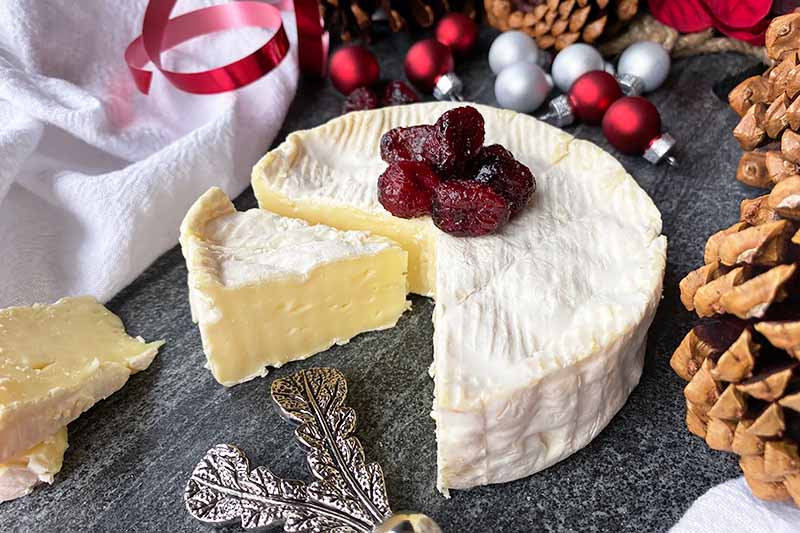
Just kidding, it happens all the time. I try to reserve some on purpose sometimes (ahem, all the time) so I can have my own secret stash to enjoy later.
If you still have some brie that was untouched and kept in the fridge, it’s easy to find ways to gobble the rest up!
If you’re looking for more than just late-night nibbles with any leftovers, you could incorporate the remaining brie in some fun recipes.
You can use what’s left in our roasted portobello sandwiches with bell peppers, for example, or our pistachio basil pesto bruschetta.
However, with communal cheese plates that have been sitting out for a few hours during a party, and touched by many hands, I advise that any leftover cheese should be disposed of.
Don’t worry – you can make a new cheese plate next week!
If You Build It, They Will Come
You should now be a pro at buying, storing, and building a gorgeous cheese plate with all of your new brie knowledge.
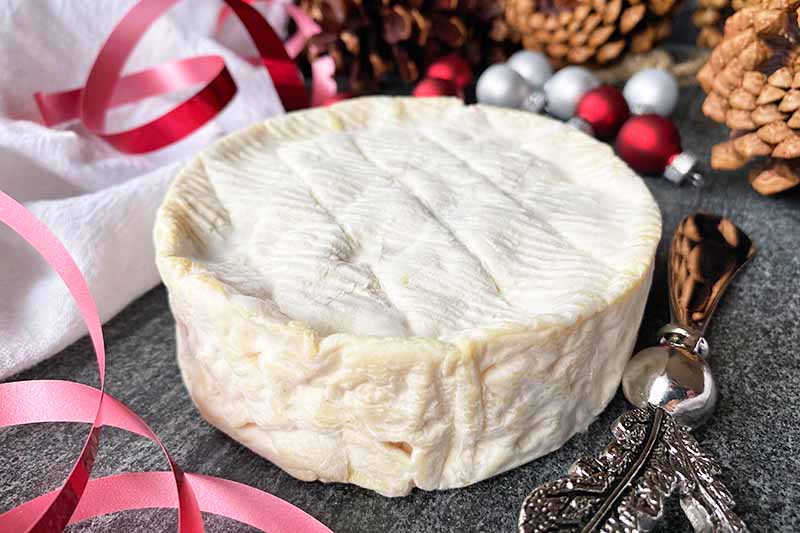
I’m getting excited for you! And just think how thrilled your friends and family will be when you coyly mention that you’ll be making a cheese plate, complete with a lovely little wedge of ooey-gooey brie.
Like I mentioned before, don’t be afraid to keep your plate simple – you shouldn’t have to be nervous or feel overwhelmed when you prepare this course.
It’s the holidays, after all! Relax, have a cocktail, and enjoy spending time with your loved ones while feasting and celebrating.
How do you think you’ll prepare brie for your next upcoming party? I would love to know! Leave me a comment below, and feel free to ask me any other questions that are on your mind.
For even more helpful guides that will help you through the holidays, study these articles next:
- Food Allergies at the Holidays
- 5 Tips to Host the Perfect Winter Gathering
- Tips to Minimize Dish Cleaning During the Holidays
Photos by Nikki Cervone, © Ask the Experts, LLC. ALL RIGHTS RESERVED. See our TOS for more details. Product photos via Amazon, Mouth, and Stonewall Kitchen.
About Nikki Cervone
Nikki Cervone is an ACS Certified Cheese Professional and cheesemonger living in Pittsburgh. Nikki holds an AAS in baking/pastry from Westmoreland County Community College, a BA in Communications from Duquesne University, and an MLA in Gastronomy from Boston University. When she's not nibbling on her favorite cheeses or testing a batch of cupcakes, Nikki enjoys a healthy dose of yoga, wine, hiking, singing in the shower, and chocolate. Lots of chocolate.

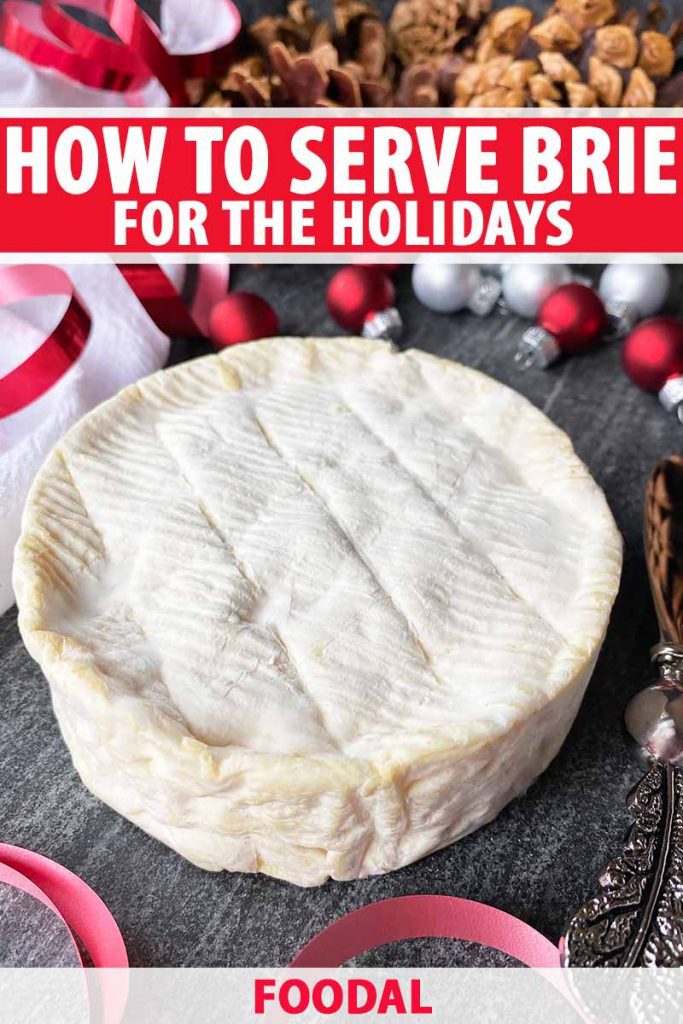
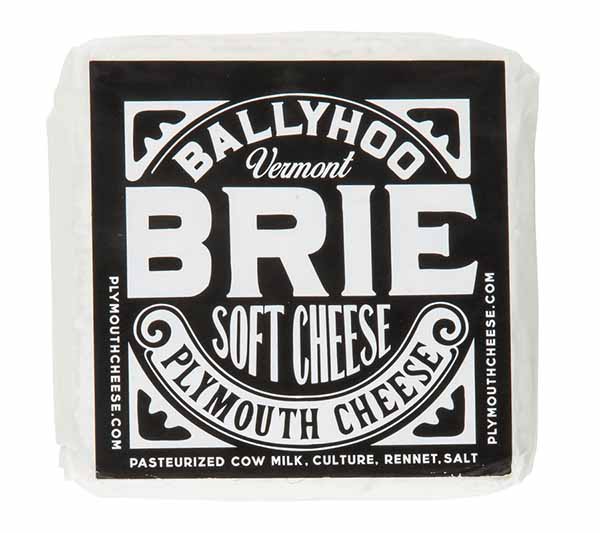

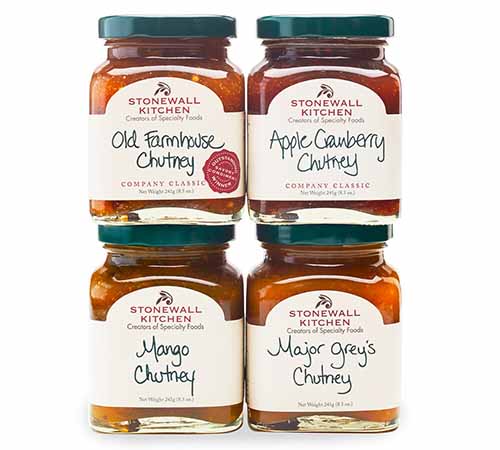
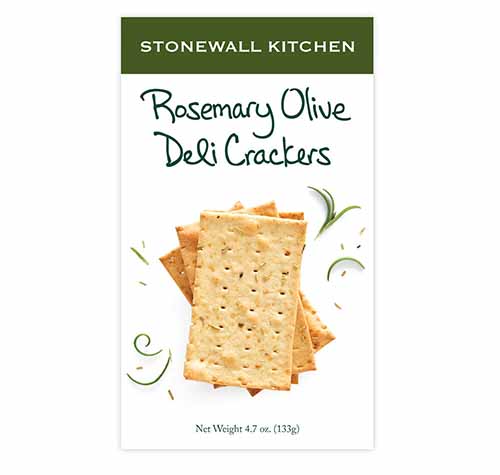


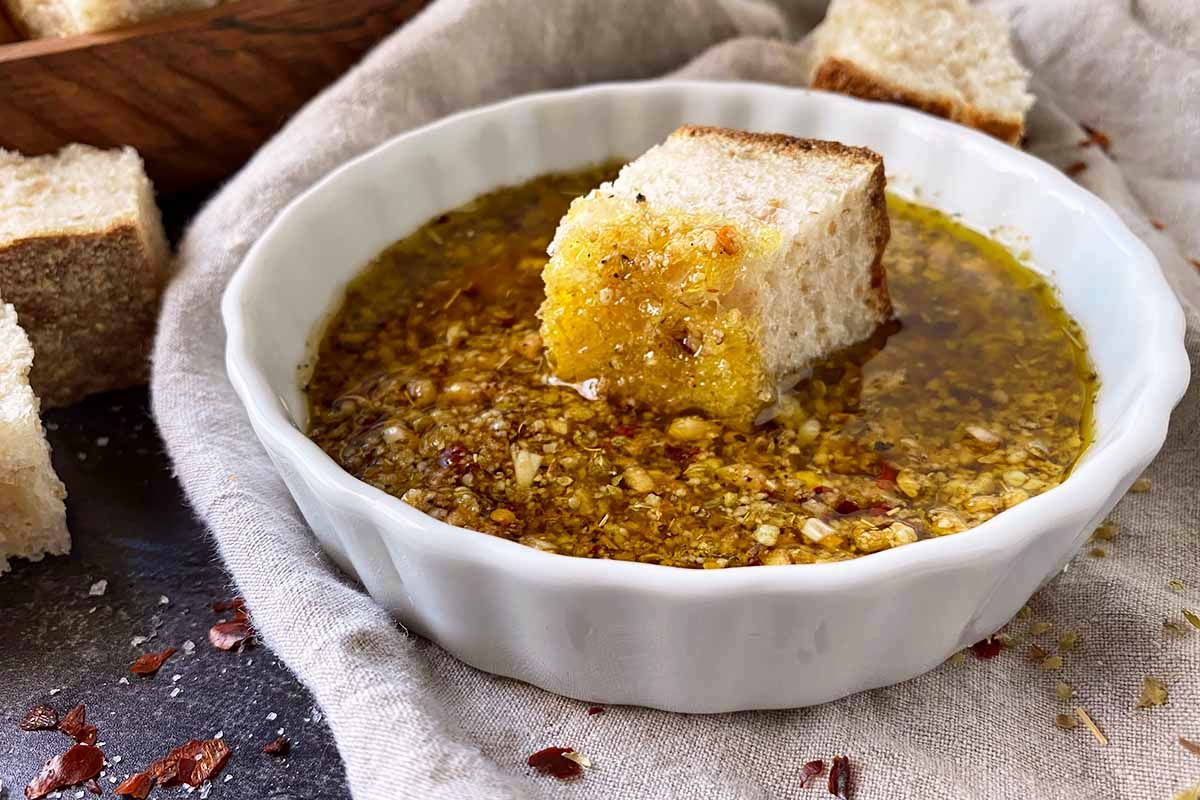
Thank you, dear Nikki. I am serving brie tonight!